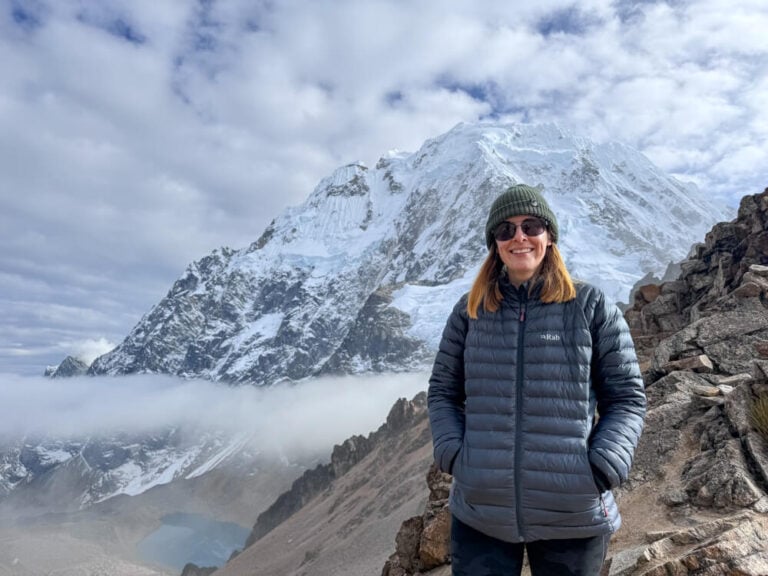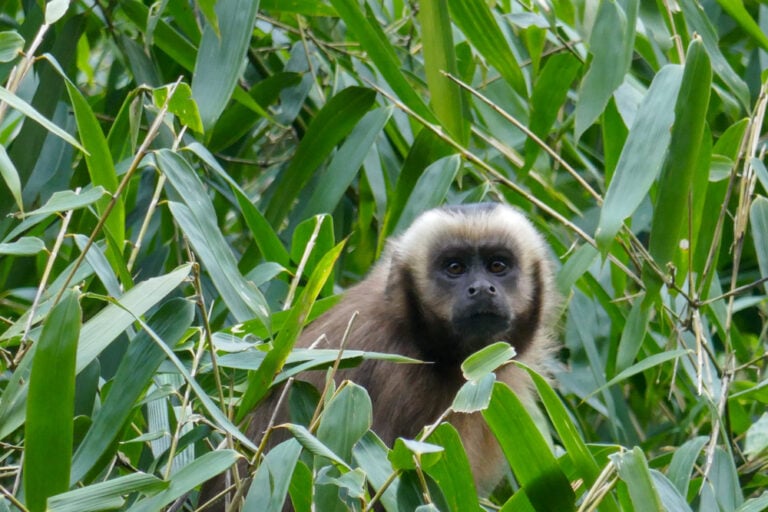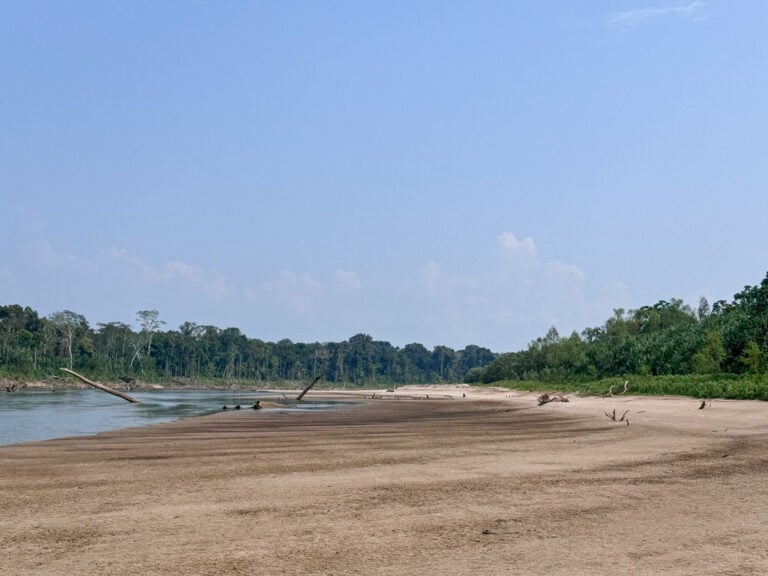6 EPIC Reasons to Visit Peru’s Manu National Park Reserve
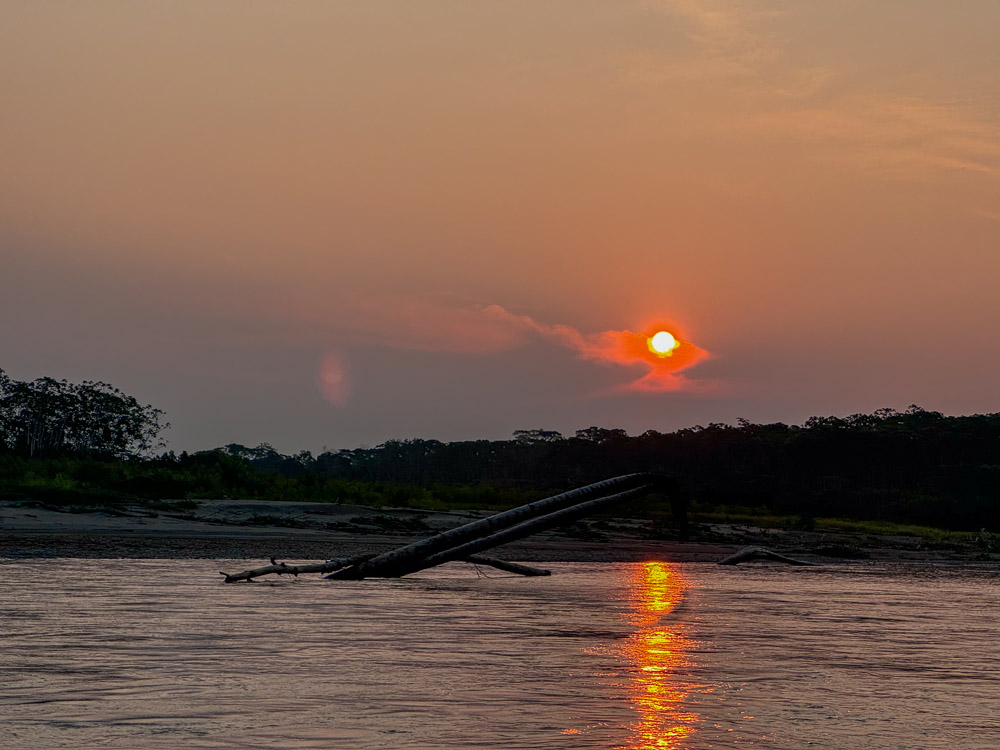
Where the Andes meet the Amazon Rainforest, Manu National Park is a haven for biodiversity and wildlife. Found in the Peruvian Amazon, it’s a designated UNESCO Biosphere Reserve and is home to some incredible species of animals, including the elusive jaguar.
When planning my trip to Peru, I knew the one place I had to visit was the Amazon. I’d visited the jungle in Ecuador and Bolivia and was desperate to experience it in Peru.
I was initially looking at visiting Tambopata, but after further research, I discovered the Manu Reserve. My previous jungle experiences felt a bit touristy, and I wanted to avoid this on this trip. The Manu Reserved promised an adventure into the depths of the Amazon Rainforest, and that’s exactly what it is.
In this post, I’ve shared six reasons you should choose the Manu Reserve. It’s genuinely one of my favourite travel experiences of all time; it was incredible. I’ve also spoken about how to visit Manu and other areas in Peru where it’s possible to experience the jungle.
How to visit the Amazon in Peru
Peru has three main places to see the Amazon: Iquitos, Tambopata and Manu. Manu and Tambopata are accessible by road (and from Cusco), but Iquitos is only accessible by flight. Pacaya Samiria is also increasing in popularity.
To visit the Peruvian Amazon, you’ll likely need to join an organised tour or find a lodge which takes direct bookings.
In this post, I’ll focus on the Manu Reserve, but here’s a quick overview of each of the other destinations.
Iquitos
Iquitos is the most popular place to visit the Amazon in Peru, and there are many tours available. However, you can only fly into Iquitos, which can be a bit frustrating for those who want to base themselves in Cusco. Iquitos is the place to go if you’re keen to see the Pink River Dolphins, but be aware that the area is very touristy. While wildlife viewing is exceptional, there will be lots of other people.
Tambopata
To reach Tambopata, you’ll first need to get to Puerto Maldonado. You can catch a flight here or take an overnight bus from Cusco. Most of the lodges sit outside of the protected area. To stay inside, you can book with Rainforest Expeditions for the Tambopata Research Center.
Tambopata tends to be a bit cheaper than Manu, but be aware that it’s very busy. Most of the tours include a visit to the famous Lake Sandoval to see the Giant River Otters. It’s not uncommon for several boats to be in the area and crowd the animals. If you want to escape the crowds, I recommend the Manu Reserve or Pacaya Samiria.
Pacaya Samiria
This area is much less explored than other destinations mentioned on this list. There are no lodges inside the park, so you’ll need to join a camping tour to explore the area. I was so desperate to do this, and it was next on my list, but sadly, I got sick. If you’re keen for the ultimate jungle expedition, I’d suggest looking at Maniti Expeditions.
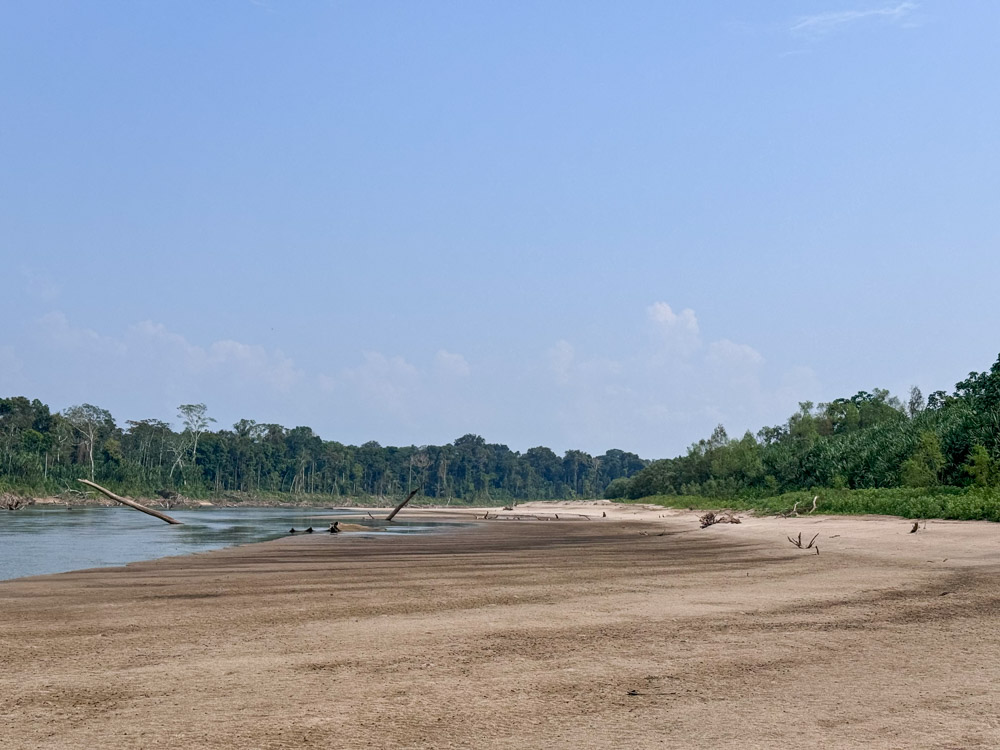
Manu vs Tambopata
For those planning to spend most of their time in Cusco to see attractions like Machu Picchu, hike the Inca Trail or Rainbow Mountain, it makes sense to visit either Manu or Tambopata.
Tambopata can be reached by an overnight bus from Cusco, and tours to Manu include transport from Cusco. It’s also possible to fly to Puerto Maldonado, the closest town to Tambopata. In terms of prices, Manu tends to be a bit more expensive, especially if you’re visiting the Reserve.
Ultimately, both offer a great experience with fantastic wildlife viewing opportunities. However, Manu National Park is much less touristy. The Reserve Zone remains largely untouched, meaning there is a tonne of wildlife to see. Tambopata is more developed for tourism, and the lodges there tend to have more high-quality facilities.
If you want an adventure and to immerse yourself fully in the jungle, I’d recommend the Manu Reserve. If you only have 3 or 4 days and want higher-quality accommodation, Tambopata is likely the better option. The Manu Cultural Zone is a good option for those who don’t want the journey to Tambopata, but don’t have the time for the Manu Reserve.
Side note: If you want to see a Jaguar, the Manu Reserve is your best option.
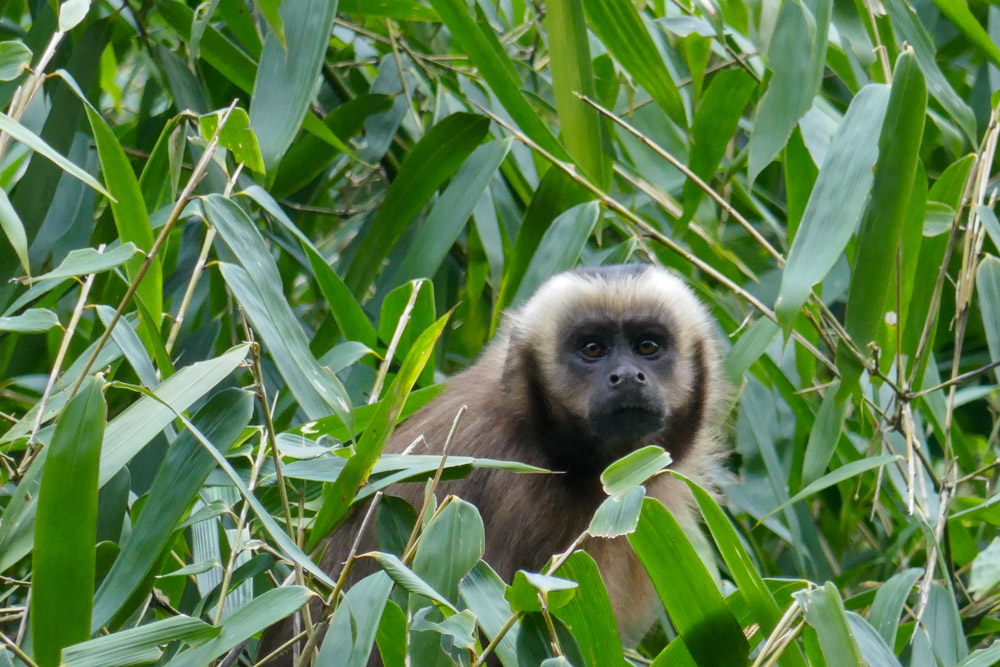
Cultural Zone vs The Reserve Zone
If you decide on Manu National Park, you’ll also have to decide between the Manu Reserve or the Cultural Zone (most visits to the Reserve also include the Cultural Zone).
What’s the difference? Manu National Park can be split into three main areas:
- The Core Zone (or Biological Zone)
- The Reserve Zone
- The Cultural Zone (or Buffer Zone)
The Core area is off-limits to visitors; it’s a completely restricted zone; only registered scientists (or locals) can visit for research. There’s a biological research station here, and we saw some scientists heading there to start a research project on our way in.
I visited the Reserve Zone, but there are strict limits on the number of tourists who can visit. It’s an incredibly biodiverse area and home to some of the most fascinating animals on the planet.
The majority of the lodges are in the Cultural Zone, where most Manu Tours take place. The area has little protection for the flora and fauna that call it home. We saw lots of logging activity, trees being burned for farmland, and several lodges along the riverbank.
So, which is best? The Manu Reserve Zone is the best place to visit the Amazon Rainforest in Peru. Tours into the Reserve take you away from other tour groups, and you go deep into the Amazon Jungle (about as far as tourists can go).
When searching for the best guided tour, I found that many tour operators weren’t entirely transparent about the difference between the Reserve and Cultural Zones. Keen to sell a tour, they implied that the only difference was the length of time, but this couldn’t be further from the truth.
The Manu Reserve Zone has an entirely different feel from any jungle experience I’ve had around the world, including the Amazon in Bolivia and Ecuador. It’s about as deep into the jungle as tourists can go, it’s more or less untouched by humans, and it feels like a completely authentic jungle experience.
You could feel the difference as soon as we left the Cultural Zone and entered the Reserve. The fruit plantations and logging trucks disappeared, the vegetation became much denser, and there was little sign of human activity.
I don’t want to put the Cultural Zone down as it’s still an incredible place to visit. If this is your first trip to the jungle, it is a great option. However, the Reserve feels more like an adventure.
It’s important to know that you can only spend a maximum of two nights and three days in the Reserve. You’ll need to sign into the park and sign out when you leave. The rest of your tour will be spent in the Cultural Zone.
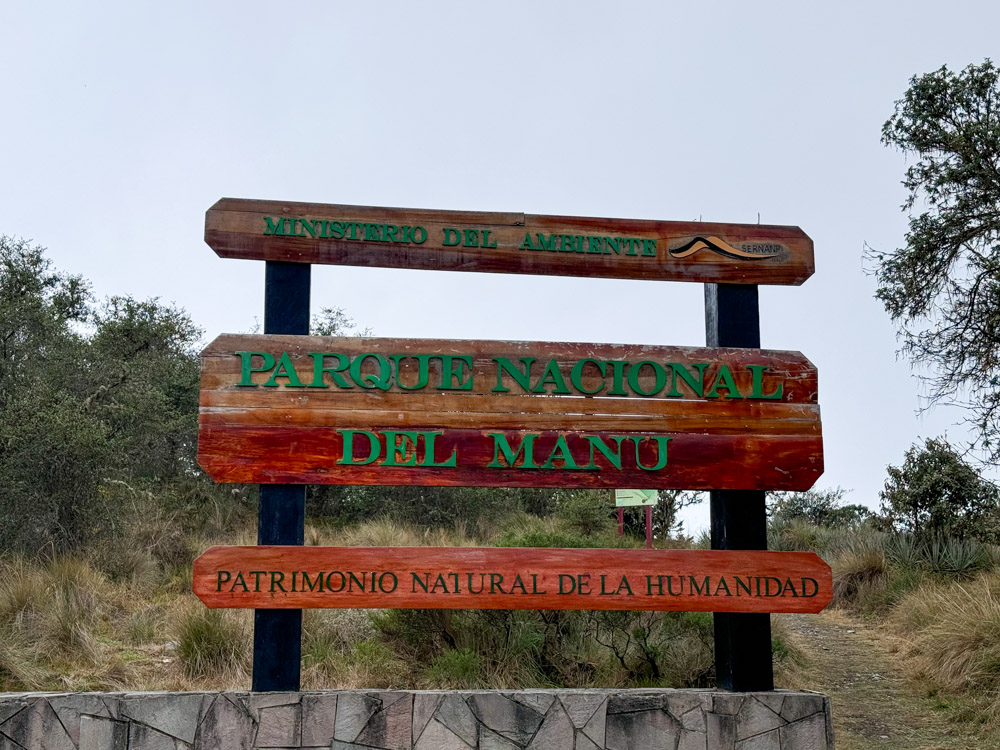
6 Reasons to visit the Manu Reserve Zone
To see incredible wildlife (including Jaguars)
The Manu Reserve is home to incredible wildlife, especially mammals. On the tour, we saw several species of mammals, including Jaguars and Tapirs. The area isn’t a UNESCO Biosphere Reserve for no reason; it has some of the greatest biodiversity on Earth.
Some of the other animals we saw include:
- Several species of monkeys, including Howler monkeys, Squirrel monkeys, Spider monkeys, Titi monkeys and Woolly Monkeys
- Sloths
- White and black caimans
- Giant river otters
- Capybaras
- Possums
- Endless bird species, such as Macaws, Harpy Eagle, Kingfishers and Parakeets
- Snakes, spiders, frogs and tarantulas
We also saw some incredible insects, including some wonderful species of butterflies; they almost looked fake!
Wildlife sightings are possible anywhere in the jungle, but the chances of seeing animals like jaguars increase dramatically once you enter the Reserve. We saw various species of birds in the Cultural Zone, but it wasn’t nearly the same experience as in the Reserve.
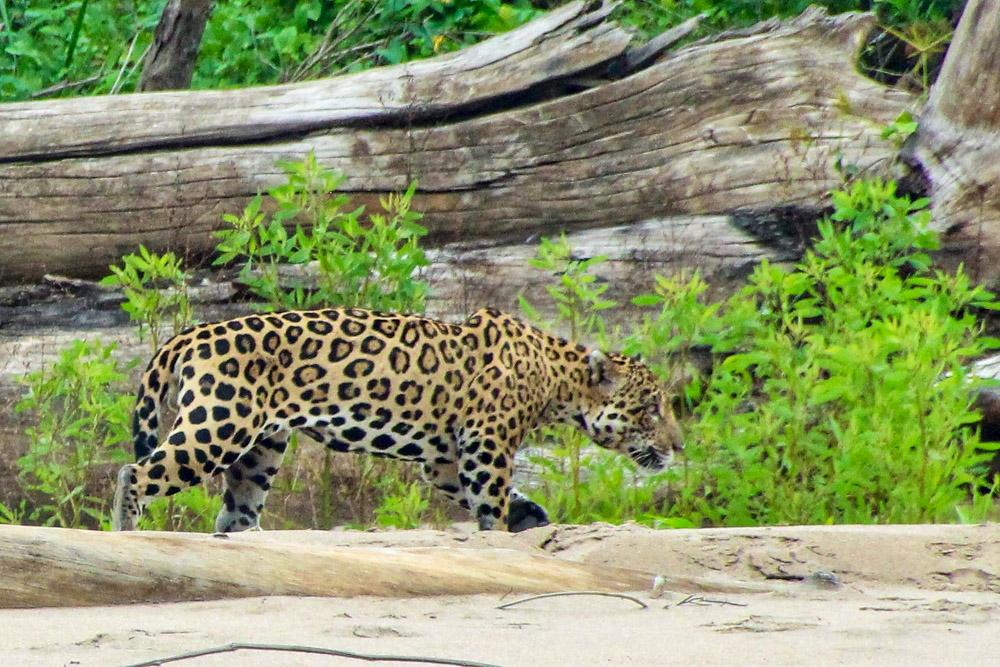
The Manu River is a great spot to look for wildlife, and it’s where we saw most of the animals, including monkeys, a lone giant otter, and even jaguars. Sadly, the same can’t be said for the river in the Cultural Zone, which has a lot of human interference.
It’s worth noting that there are no Pink River Dolphins in Manu. You’ll need to visit Iquitos to see those.
For an authentic jungle experience
Most trips to the Amazon Jungle in South America involve visiting a touristy area where there are often several lodges around. While it’s still a fantastic experience, there is something so special about going off the beaten path and to somewhere so untouched by humans.
If you want the most authentic Amazon experience, look no further than the Manu Reserve. Once you enter, you’ll stay at a lodge owned by the local Matsiguenka Community. But otherwise, we saw no signs of civilisation. We had the entire river to ourselves and even explored several Oxbow lakes without seeing another soul.
The jungle is more or less untouched, and strict laws are in place to protect the area. Sadly, illegal logging does occur, but we didn’t see any signs of this.
The activities tend to be the same as in the Cultural Zone, but they are much less touristy and way more authentic. We did several night walks, hiked to a natural Macaw Lick, rowed around Oxbow Lakes, climbed observation towers, camped in the jungle, and searched for several rare species of plants and animals.
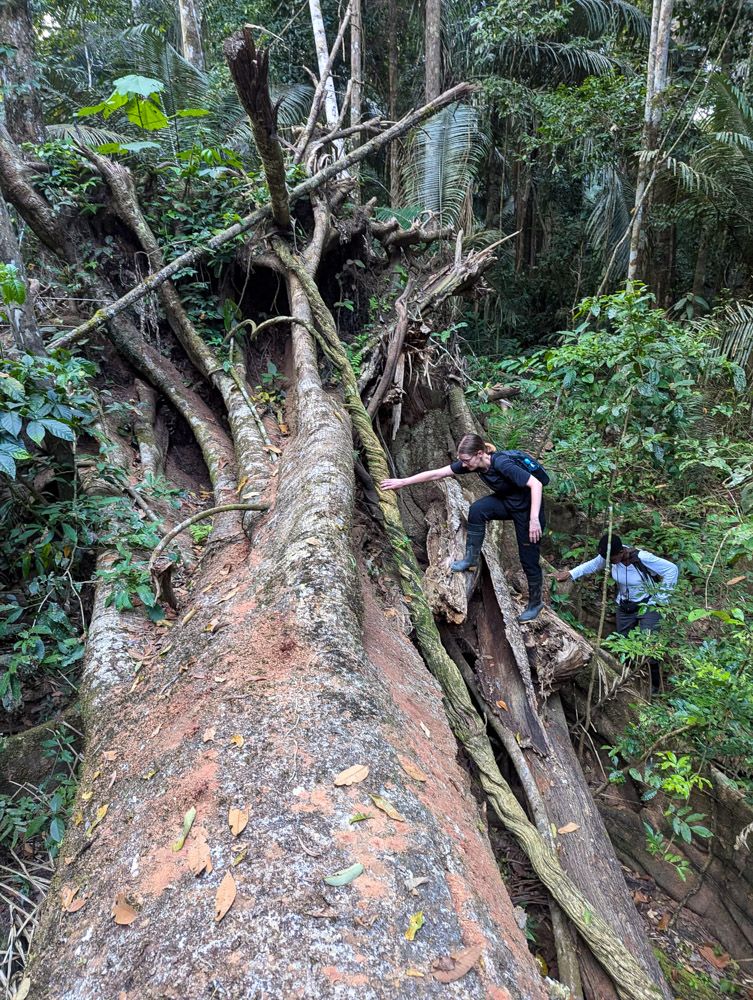
For a wild adventure
Spending a week exploring the Amazon Jungle is certainly an adventure, and the Manu Reserve only adds to this. Basic facilities, hikes through the jungle, camping in the jungle, night walks, deadly animals… the list goes on.
My previous trips to the Amazon had always felt more like holidays than adventurous trips, so I was happy to embrace the adventure and push myself out of my comfort zone.
I LOVE the jungle, it’s my happiest of happy places. I love being immersed in nature and surrounded by beauty. Despite this, I still found my week in Manu a mental and physical challenge. Firstly, you’re so far away from anything. On the third day, we spent almost nine hours on a boat. This is literally how far away you are from the nearest community (and that community is also very remote). This got into my head a bit; I couldn’t help but feel in the middle of nowhere.
Plus, there’s the whole being in the jungle thing. This means insane heat, crazy humidity, endless insects, deadly animals… I’ll stop there. The facilities are also very basic. During the day, the only toilet is nature’s toilet, which often means squatting in a bush or finding a private place on the side of the riverbanks.
Then, there was the camping. I kind of wish we had done this at the start of the tour before we were all so exhausted by the time we got to it. But, despite the sleepless night, it was still an incredible experience.
Okay, I know this is meant to be a post about why you SHOULD visit the Manu Reserve, so I don’t want to sound negative. Ultimately, all of this turned it into the adventure of a lifetime. If you want a true adventure and to be pushed outside your comfort zone, then do this tour.
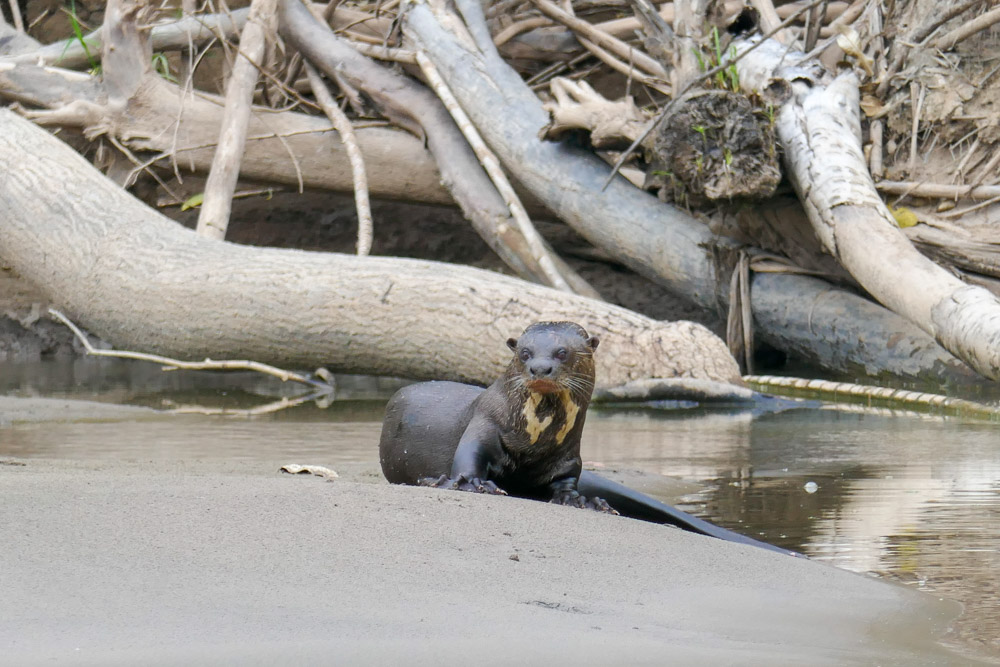
To escape the crowds
On the day we left Cusco, several other shuttles were heading into the Cultural Zone. At every stop, other groups were admiring the same wildlife and views. This started to change once we entered the jungle, but we still saw a few other boats and many lodges.
However, we were the only tourists in the Manu Reserve. Our guide said there is sometimes one other group, but there are normally only a handful of tourists there at any one time. As of 2024, there is only one lodge in the Reserve, which also limits the number of people who can enter.
If you want to escape that touristy feeling, then the Reserve is a great choice.
I have to say, even the Cultural Zone didn’t feel anywhere near as busy as other areas of the Amazon I’ve been to. It’s just a shame so much has been destroyed by humans, pushing much of the wildlife away. My friend who visited Tambopata said she saw many other groups on her tour, and Iquitos is also known to be very busy.
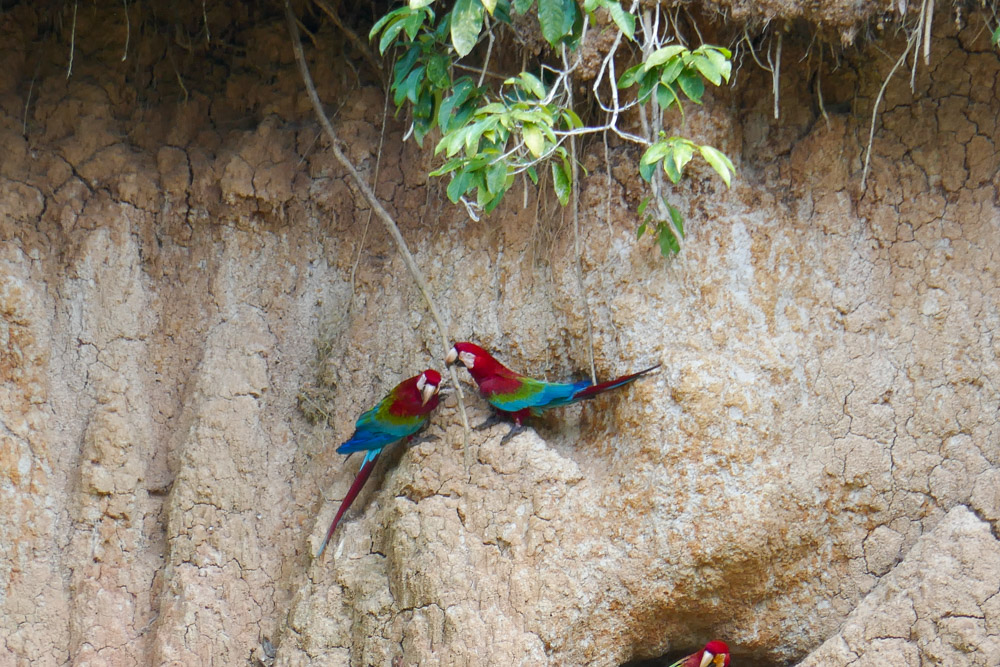
To learn about the Indigenous communities
One of the most interesting parts of my trip to the Manu Reserve was learning about the Indigenous people that call the area home. Many of the local communities have become more connected to the outside world in recent years. However, it was still fascinating to observe their traditional way of life and learn how they survive in the jungle.
The area is also home to the largest uncontacted tribe on Earth, the Mashco Piro Tribe. These natives live deep in the Amazon jungle without contact with the outside world. They have no idea who we are, why we visit or even how to communicate with outsiders.
In the past, there have been clashes between the Tribe and other communities, as well as loggers. This has sadly resulted in deaths and increased tensions. While there have never been any threats to tourists who visit, we were still given a very strict talk about what to do if we come across the tribe.
It’s hard to imagine what they must think of us as we drive past in our boats. It’s also weird to think they have no idea about the outside world. They don’t use boats, have never seen a mobile phone and probably don’t even know there is a world beyond the Amazon Rainforest.
This was fascinating, but hearing stories about previous tensions was also a bit unnerving. As we entered the Reserve, we saw people watching us through the bushes. We also had to skip an observation tower as the ‘no-contact’ people had been seen in the area.
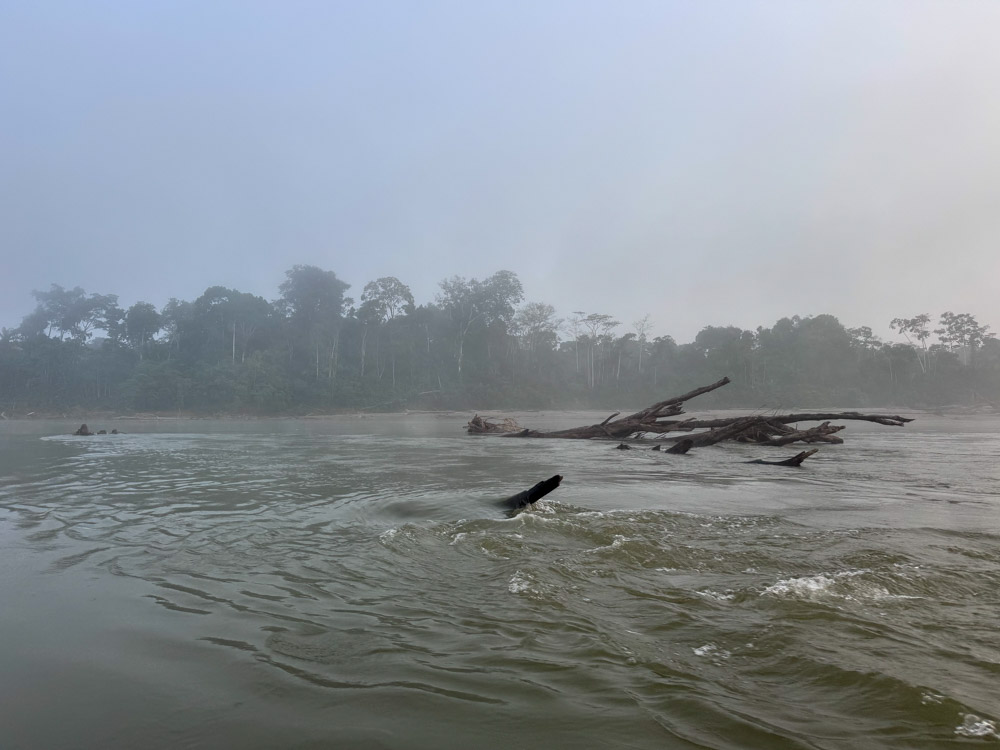
To experience the diversity
I’ve already discussed the wildlife in Manu, but I want to mention just how diverse the area truly is. Not only is it one of the most biodiverse places on the planet, but Manu boasts various unique ecosystems that you can explore on your tour.
The tours all begin in Cusco, and this means spending the day driving through the Andes Mountains. Once you reach the entry to the National Park, you’re still around 4,000 metres above sea level. This means descending through the most beautiful cloud forest. The plant species and wildlife here are entirely different to those in the lowland rainforest. You’ll also be rewarded with incredible views of the forest and even some waterfalls.
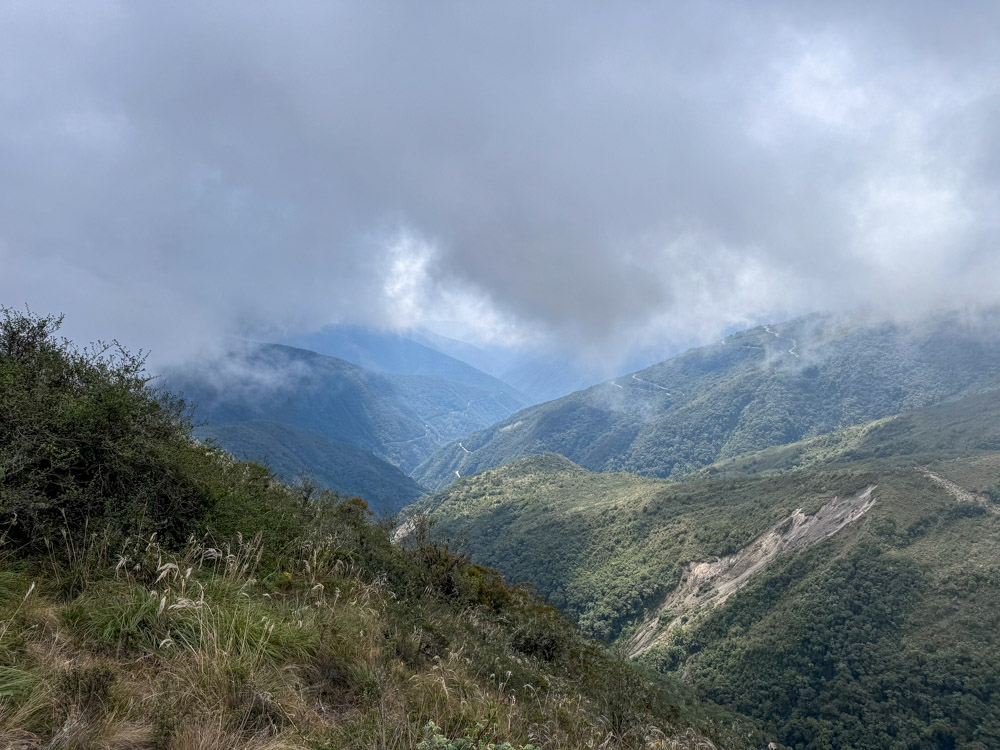
The Madre de Dios River also feels very different to the Manu River, and there is a noticeable change in the wildlife and vegetation.
Once you’re in the Reserve, there are endless species of plants and animals. Even though spending a few days in the jungle might sound like a long time, there is so much to see in Manu that it never feels boring.
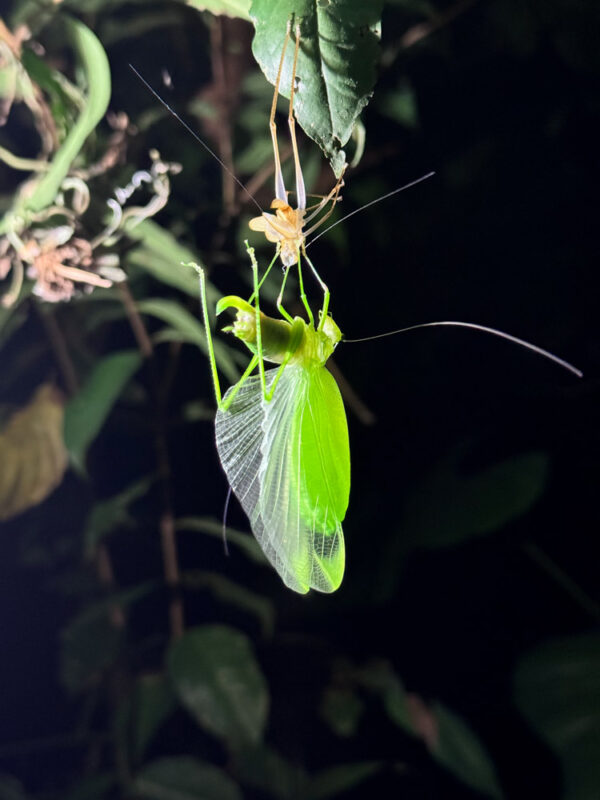
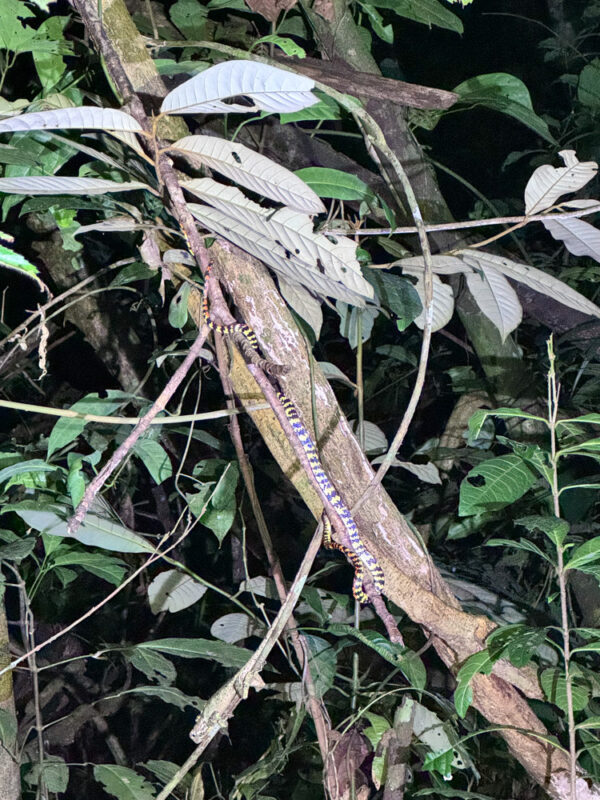
Is the Manu Reserve right for you?
In my eyes, there are no cons to visiting the Manu Reserved Zone. It was exactly the type of jungle experience I had longed for, but I’d be naive to think it’s something everyone would enjoy. Despite thoroughly enjoying the tour, it still pushed me mentally and physically.
Here are a few things to know about visiting the Manu Reserve:
- There are long travel days. It took us almost two whole days to reach the Manu Reserve. This included one full day of driving and one full day on the boat. If you’re short on time in Peru, it might be tricky to visit the Reserve area.
- There is a lot of time on the boat. The only way to reach the Reserve is by boat, so most of your days will be spent riding along the river. On one day, we spent almost nine hours on the boat. Most of our breakfasts and lunches were eaten onboard. However, once you reach the Manu River, the vegetation completely changes, and the wildlife viewings increase dramatically. This makes it more like a river safari than a boat ride, and I loved constantly looking for animals.
- It’s very remote. I thought I’d been to a remote part of the jungle before, but this was really remote. As of 2024, there’s only one lodge operating in the Reserve. The nearest village is several hours away by boat. You are literally in the middle of nowhere. This only adds to the adventure, but it might be unsettling for some people.
- It can be challenging. Any trip into the jungle will be challenging. Heat, insects, basic facilities… it’s hardly a luxurious way of living. Make sure you’re happy to be pushed outside of your comfort zone.
- The humidity. The jungle is normally humid, but the deeper you go, the more humid it gets. There’s no air conditioning or fans in the jungle, so sleeping at night can be warm. However, I found it manageable.
- It’s basic. While the lodges exceeded my expectations, they’re still very basic. Expect simple rooms with beds and mosquito nets. Some lodges have private bathrooms, but others require sharing. There is usually only electricity in the evening (and sometimes not at all).
If you’ve never visited the jungle before and you’re a bit worried, it might be sensible to visit the Cultural Zone or Tambopata instead. A week in the jungle is long if you’re not having a good time.
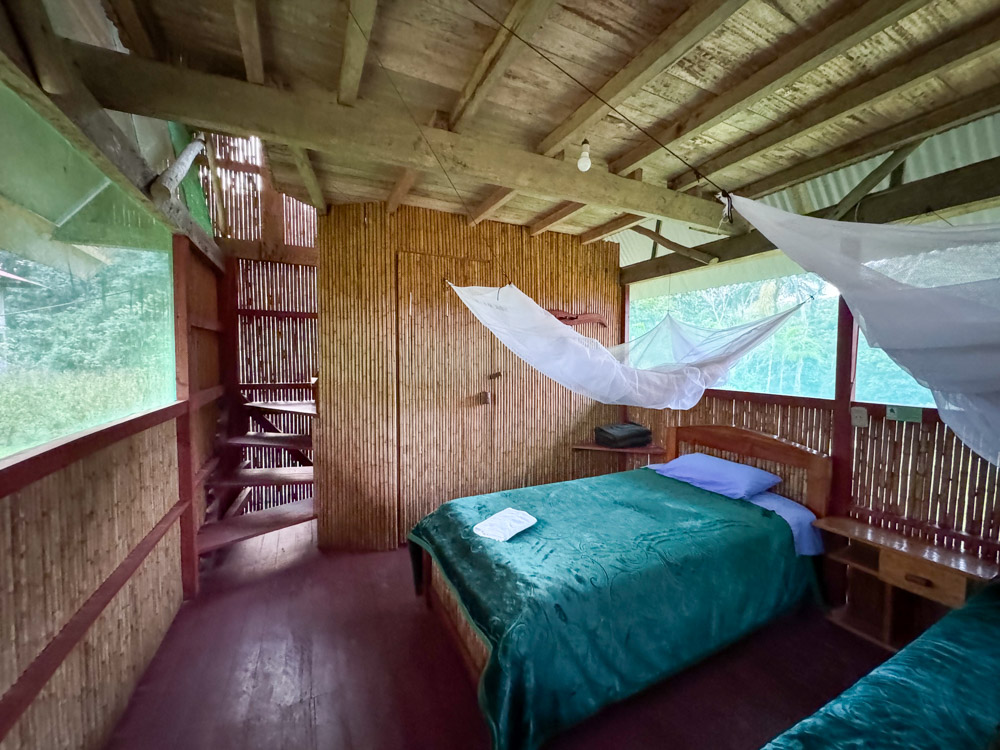
The best time to visit Manu National Park
It’s possible to visit Manu throughout the year, but the area has two distinct seasons: the dry season and the rainy season.
The dry season (May to October) is the best time of year to visit Manu National Park. It gives you the best chance to see wildlife, especially jaguars. The trails also tend to be dry, making them fully accessible. The only real downside is the river level. The water level is much lower, and it’s not uncommon for the boats to get stuck (this happened to us a couple of times).
The other issue with visiting in the dry season is wildfires. In September 2024, huge areas of the Amazon caught fire, affecting air quality even at higher altitudes in the cities. If you are in danger of being caught in this, your tour won’t take place, but it’s still something to consider.
It’s worth noting that it can still rain in the dry season. Although the rain tends to be short and sweet, it can still be very heavy. I visited in August, and we had a couple of heavy rain showers.
The rainy season (November to April) makes visiting Manu challenging (although still possible). The trails can often be flooded, making hiking through the jungle harder. Wildlife sightings also decrease during this period. On the plus side, you’ll be seeing the Amazon Rainforest at its best, with the lush greens on display.
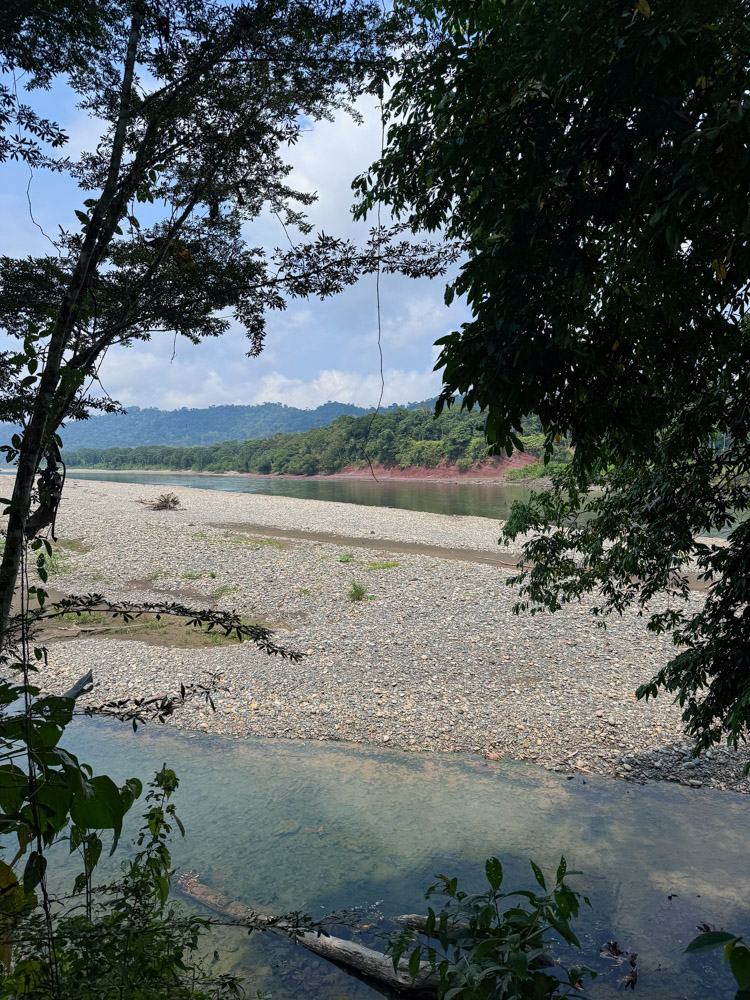
Tours to Manu from Cusco
To visit the Manu Reserve, you’ll need to join an organised tour from Cusco. You can’t enter the area without a registered guide, so it’s one of those activities you need to plan in advance.
There are endless operators selling tours to Amazon from Cusco, but not all of them include the Reserve Zone. When choosing your tour, make sure it specifically says you’ll be visiting this area (if that’s where you want to go). If the tour is less than six days, it’s likely just to the Cultural Zone.
I highly recommend choosing a tour that lasts at least seven days. This might sound like a long time, but two of those days are full travel days. That gives you five days in the jungle (and three days in the Reserve).
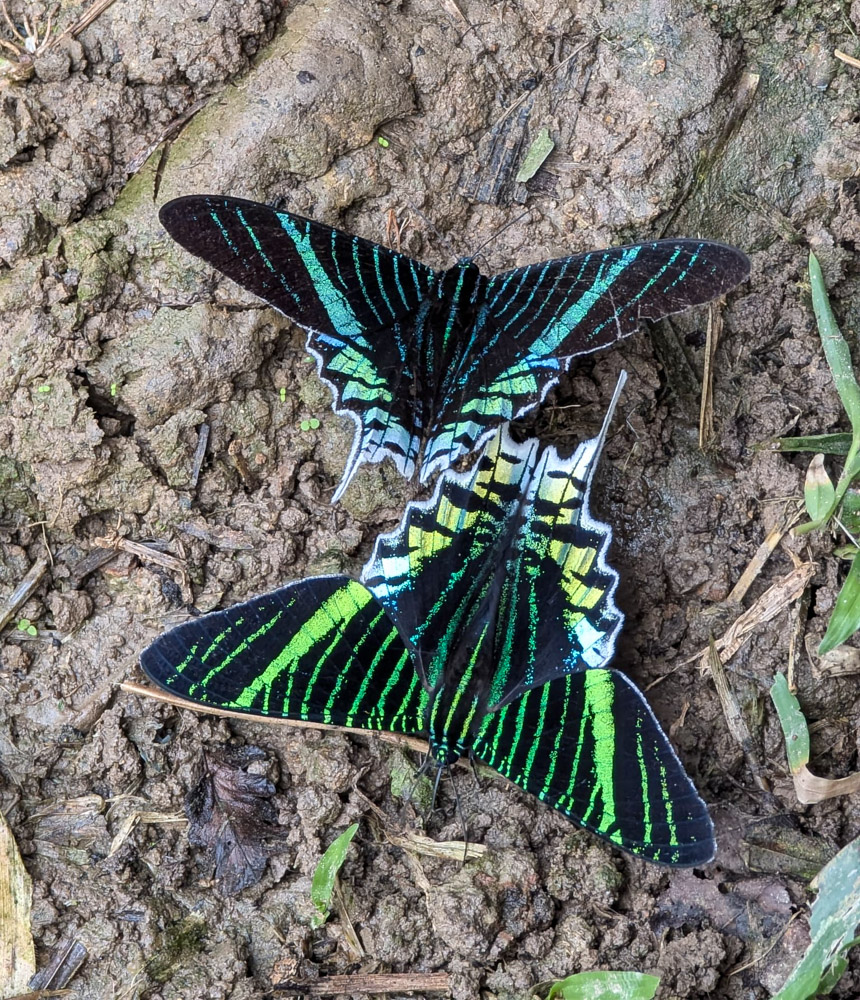
You can book your tour once you arrive in Cusco (like I did). It’s sometimes easier to find last-minute deals and negotiate on price. However, tours to the Reserve aren’t daily, so you may need to be flexible with your dates. I had to wait four days for my tour.
I’d highly advise booking your tour in advance if you only have a set amount of time. I did my tour to Manu with Palotoa Amazon Travel, and I really can’t recommend them enough.
If Palotoa don’t have any dates that work for you, this tour is very highly rated and follows a similar itinerary to what I did.
For those who don’t have time to visit the Reserve, shorter tours are available to the Cultural Zone, including this very well-rated four-day tour. The shorter tours are much cheaper.
Summary: Is Manu National Park worth visiting?
Yes, visiting Manu is the highlight of my trip to Peru. I absolutely loved it and would return in a heartbeat. It’s a fantastic place to experience the Amazon Jungle in all its glory. The area has so much to offer and some incredible wildlife viewing opportunities. It truly was an adventure!


